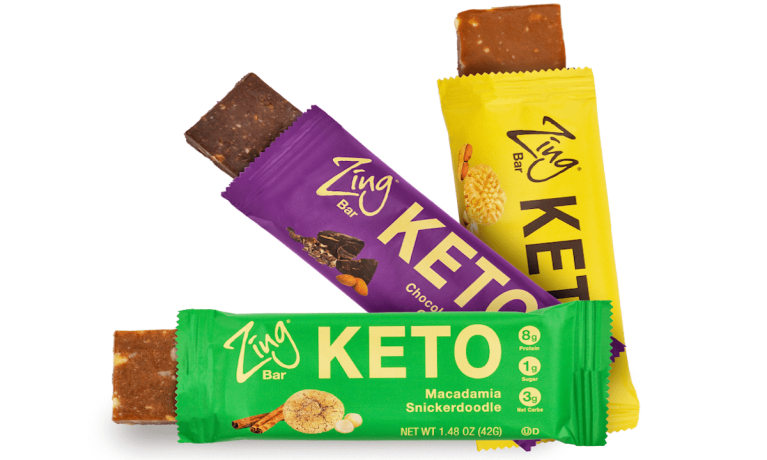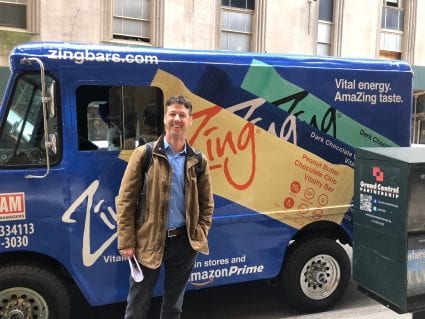
Nutritionist-turned-entrepreneur David Ingalls says that what makes his Zing Bars stand out from the healthy-snacks crowd is that competing products either taste good or boast lots of nutritional value, but rarely do both.

Zing Bars Co-founder and CEO David Ingalls
“We bring two elements together that we believe we do in combination better than anyone else,” Ingalls, CEO and co-founder of Zing Bars, told PYMNTS in a recent interview. “There’s a number of bars out there that do great taste and poor nutrition, and there’s a number of them that do poor taste and lots of greens or exotic ingredients. But there are very few that authentically marry taste and nutrition – and that’s what Zing Bars do.”
Founded by Ingalls and three other registered dietitians, Zing aims to provide snacks that are packed with nutritional ingredients, but that someone would actually enjoy eating.
“If you try many of the products out in the marketplace, taste is usually the last consideration,” Ingalls noted. “But for us, it’s paramount. We understand [that a bar] has to taste good in order for people to adopt it.”
Consumers are voting with their wallets, and Zing this month added a new line of three snack bars that comply with the popular keto diet, which calls for consuming low carbohydrates, moderate protein and lots of certain fats. Zing’s new keto bars combine just one gram of sugar and three grams of net carbs with healthy fats from nut butters, cocoa butter and medium-chain triglyceride oil.
The new bars augment what Zing calls its “classic line” of 10 health-conscious snack bars: Dark Chocolate Mint, Double Nut Brownie and more. All feature “good” carbs (high fiber, low to moderate sugar), “good” fats (monounsaturated fats rather than trans fats, hydrogenated fats or animal fats) and lots of protein.
Generally based on nut and seed butters, Zing bars omit caffeine, gluten, GMOs and soy products. All but one are vegan, and most have nine grams of sugars or less derived from tapioca syrup and agave nectar, which rank low on the glycemic index.
Helping People Find Healthy Snacks
Ingalls and his co-founders came up with the name “Zing Bars” because the snacks aim to give those who eat them a little “zing” without caffeine or sugar. “Zing, zest and vitality are part of the equation,” Ingalls said.
He and his co-founders – Minh Hai Alex, Sandi Kaplan and Kathleen Putnam – should know what makes for healthy snacks, as all four are registered dietitians.
They came up with the idea for Zing Bars in 2006 while working in a Seattle health clinic and trying to steer diabetic and pre-diabetic patients to suitable snacks. Ingalls said most energy bars for sale at the time either focused on athletes and didn’t have the right nutritional characteristics or “were more of a candy bar.”
He and his colleagues would tell clients to find energy bars with good carbs, good fats and good protein – but those didn’t really exist, so the four ended up creating their own.
Working with a food manufacturer for two years, the group developed the first Zing Bars and sold them out of their office. Other local dietitians, naturopathic doctors and the like started carrying the bars as well, then a local chain of food co-ops began selling them after getting lots of customer requests.
That got Whole Foods’ attention, and Zing Bars now sell at some 3,500 stores owned by Whole Foods, Fred Meyer and other U.S. chains, as well as some in Canada.
COVID-19 Boosts D2C Sales
The pandemic has also given a big boost to Zing Bars’ direct-to-consumer (D2C) sales. Ingalls said that between the company’s own website and its Amazon Marketplace presence, D2C has grown from 5 percent of the business a few years ago to about 40 percent now.
That’s partly because the outbreak redirected customers from brick-and-mortar retail to eCommerce, but Ingalls said it’s also because there’s lots of competition among energy bars on supermarket shelves.
“Consumers get overwhelmed by the bar aisle when they go to Whole Foods or Kroger, where there’s 20 feet [of products stacked] six feet high,” he said. “There are just so many options that it’s almost easier to research online what they want, zero in on what they like and then buy that by the box.”
The Goal: Become a Household Name
Ingalls said Zing currently has between $5 million and $10 million in annual sales and is “not quite profitable, [but] we’re very close.”
And while the company hopes to expand, it expects to stay private and get funding from family, friends and a current crop of mostly Seattle-area investors.
“The long-term game plan is to grow into a household name,” Ingalls said. “We want to be known as the go-to, high-quality protein bar where you’re getting all of your needs met – and you’re feeling that sense of vitality, zest and zing after you eat it.”